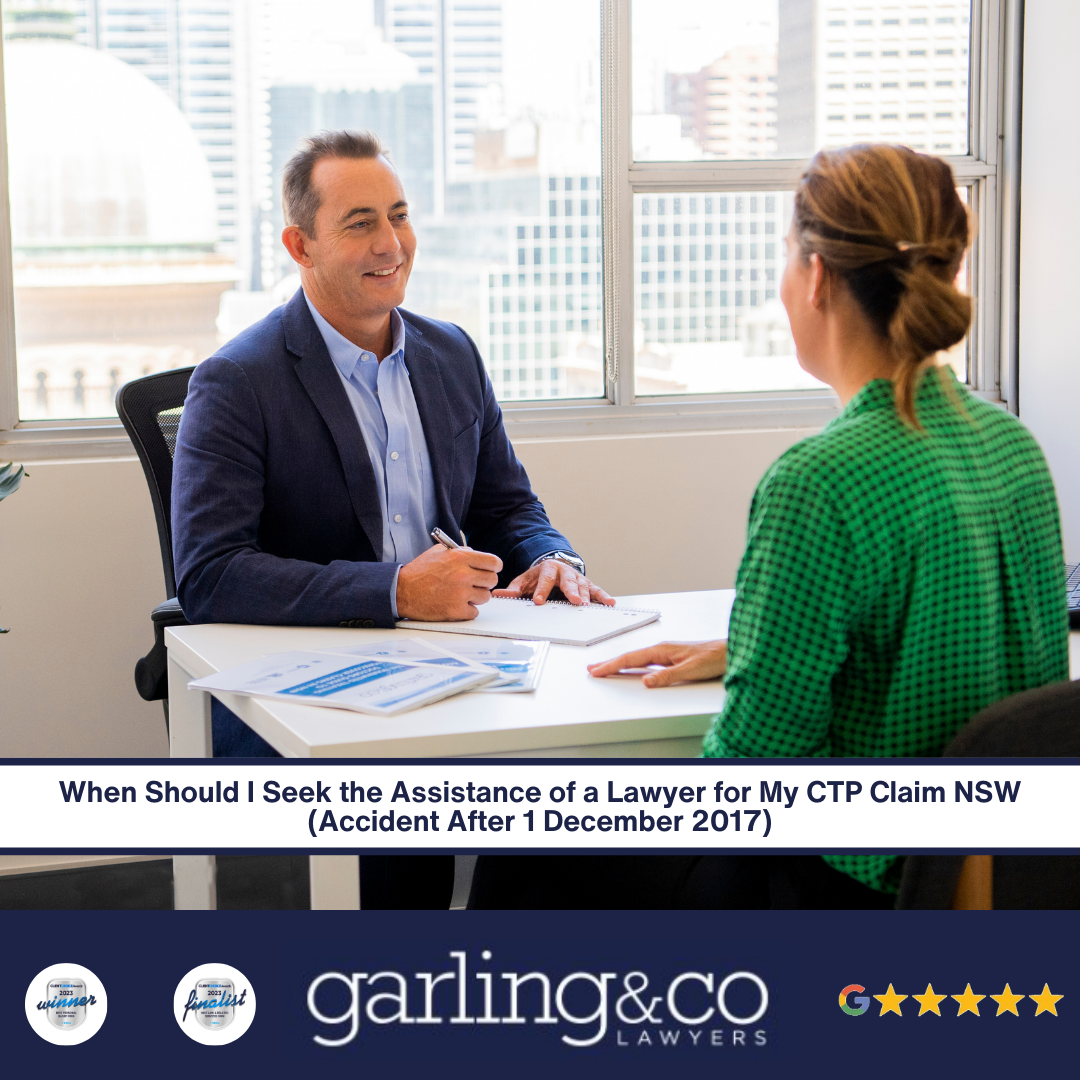
Recent CTP changes
The reform will allow all injured motorists, regardless of who was at fault, to obtain benefits for loss of income, medical expenses, and commercial attendant care for a period of 6 months similar to the current workers’ compensation scheme.
Not at Fault Moderate Injury (less than 11% WPI)
If the injured person was not at fault and has suffered moderate injuries reflected in a whole person impairment (WPI) of 11% or less they will be entitled to two years of weekly income benefits and payment of medical expenses and attendant care needs, much the same as the current workers’ compensation scheme. If the injured motorist requires assistance after the two year cut off they can make a common law claim for past and future economic loss. The maximum period such injured motorists can receive weekly benefits will be 3 years.
A common law claim, if made within 3 years will allow payments for past and future loss of income only. Once the common law claim settles no further weekly benefits will be paid. Medical expenses and care needs will however continue to be paid, if reasonably necessary.
Not At Fault Serious Injury (WPI 11% or greater)
Seriously injured motorists with a WPI of 11% or greater will receive the same benefits as moderately injured motorists. However, in addition to these benefits, a seriously injured person who pursues a common law claim will be entitled to up to 5 years weekly income payments until their common law claim settles. They may be able to receive medical expenses benefits, as well as commercial attendant care benefits for life.
Within 3 years of the accident seriously injured motorist can make a common law claim for compensation in relation to past and future loss and non-economic loss for pain and suffering. The idea behind the reform is to make benefits available quickly in order to reduce financial hardship and allow injured motorists to concentrate on their recovery and getting back to their pre-injury life style.
The new CTP reform is set to save NSW motorists approximately $120 off their Green Slip, and it is expected that on average premiums will drop from $650 to $528 in NSW. This is a win overall as it will not only benefit motorists but also reduce the super profit that insurers boasted prior to this reform.
How To Make An Application
The injured person is required to make an Application for Personal Injury Benefits. To do so, an Application for Personal Injury Benefits is made through the State Insurance Regulatory Authority website, known as SIRA.
You need to make an application for personal injury benefits before seeing a Lawyer.
Once the claim is made a lawyer can assist with the matters below.
Statutory Benefits Scheme
You will need to see a lawyer in relation to ongoing benefits you may have under the statutory benefits scheme if an insurer decides about the following: –
- The motor accident was caused wholly or mostly by the fault of the person claiming statutory benefits; or
- The person claiming statutory benefits injuries arising from the motor accident were minor injuries.
If the insurer decides that the accident was your fault or that you have contributory negligence of greater than 61% or that your injuries were minor injuries, then you are not entitled to receive weekly payments and medical expenses beyond 26 weeks.
This decision must be made in writing and usually is made at about 3 months after the accident.
You can challenge this decision through the Dispute Resolution Service (DRS) and will need the assistance of a lawyer.
This is the time when you need to consult with an accredited specialist in personal injury law to determine if you can receive statutory benefits for greater than 26 weeks.
Common Law Claim
A claim for compensation for common law damages can only be made if the insurer agrees the following: –
- The motor accident was caused wholly or mostly by the fault of the other driver; or
- That your injuries from the motor vehicle accident are more than a “minor injury”.
A claim for common law damages entitles you to claim an amount for the following: –
- Non-Economic loss – pain and suffering, that is loss of enjoyment of life as long as your whole person impairment exceeds 10%.
- Economic loss – compensation for loss of income including:-
- Past loss of earning.
- Future loss of earnings.
- Future deprivation or impairment of earning capacity
- Loss of superannuation.
- Damages for costs relating to accommodation or travel incurred as a result of the injury.
- Damages for the cost of the financial management for any damages that are awarded.
Non-Economic Loss
To make a common law claim for non-economic loss, that is pain and suffering, loss of amenities of life and reduced life expectancy you need to establish the following:-
- That the accident was caused by the fault of the other driver.
- That you have more than a “minor injury”.
- That you have a whole person impairment greater than 11%.
Economic Loss
To make a claim for common law damages for past and future loss of income or deprivation or impairment of future earning capacity you must establish the following: –
- That the accident was caused by the fault of the other driver.
- That you have more than a “minor injury”.
You will need the assistance of an accredited specialist in personal injury law to assist you to obtain the necessary medical and other evidence to make a common law claim for damages.
You must make a claim for common law damages within 3 years from the date of the accident.
To assist you in making a common law claim for damages, the insurer is required to pay legal costs in accordance with Schedule 1 of the Motor Accidents Injuries Regulation 2017. Schedule 1 allows an amount of legal costs to be paid by the insurer based on the amount of compensation you receive and the stage at which your claim is resolved.
The costs paid by the insurer however generally do not cover the total costs and disbursements incurred in preparing your claim. Your lawyer can charge legal costs and disbursements over and above those required to be paid by the insurer under Schedule 1. This must be agreed between you and your lawyer. Any legal costs paid over and above that contained in Schedule 1 are paid at the conclusion of the claim and are paid from the damages you receive.
You should always seek the advice of an Accredited Specialist in Personal Injury Law.












